Marsupials are one of the three lineages of modern mammals, alongside the monotremes and placentals. All three of these groups share the defining features common to the Mammalia class, including having hair/fur, feeding young with milk, generally being homeothermic/endothermic, and so on. However, each also has its unique derivations. Read on to find out about what traits define marsupials, how they are classified, where they live, and other important facts.
How Do Marsupials Compare to Other Mammals?
Reproduction, Birth, and Development
As summarized in the above video, monotremes, marsupials, and placentals are most readily distinguished by their different reproductive strategies. Monotremes are the only mammals that retain the ancestral trait of egg-laying. Meanwhile, both marsupials and placentals evolved to give birth to live young. However, the newborns of monotremes and marsupials are more similar to each other, each being still relatively undeveloped (often described as looking like little pink jellybeans!) and requiring an extended period of protection and lactation to fully develop. Placentals, on the other hand, generally have longer gestation periods in which they nourish their young via the unique organ their group is named for: the placenta. This results in the birth of what are generally more developed offspring. (Of course, there are some small mammals such as mice that retain short gestation periods and give birth to babies that still resemble the pinky sort!)
Lactation also varies between the three groups. While both marsupials and placentals possess teats or nipples from which the young suckle milk, monotreme mothers secrete milk directly from mammary patches on the abdomen, which the young then must lap up. Many marsupials also have some form of pouch or skin fold which houses the teats and provides extra protection to the still developing young. However, contrary to popular belief, this is not a universal trait (see “Do All Marsupials Have Pouches?” below).
Body Temperature, Biogeography, and Species Diversity
Other traits that distinguish the three groups include basal temperature, biogeography, and species diversity. Marsupials generally have a lower average body temperature than placentals, but a higher one than monotremes. Likewise, they rank in the middle in terms of both global range and number of living species. Monotremes are represented by just five living species confined to Australasia (defined here as Australia, Tasmania, New Guinea, and nearby islands). In contrast, marsupials comprise 387 living species across both Australasia and the Americas. It is the placentals, however, who are by far the most widespread and diverse. This group boasts 6152 living species and can be found on every continent and in every ocean!
Summary of Marsupials Vs. Monotremes and Placentals
| Feature | Monotremes | MARSUPIALS | Placentals |
|---|---|---|---|
| Reproduction, Birth, Development of Young | oviparous (egg-laying); short incubation followed by birth of relatively underdeveloped young; extended lactation via milk patches | viviparous (live birth); short gestation in twinned uteri followed by birth of relatively undeveloped young; extended lactation via teats, usually in a pouch | viviparous (live birth); longer gestation in a single uterus nourished by a placenta followed by birth of more developed young; variable lactation via external nipples/teats |
| Basal Body Temperature | 31.2°C (88.2°F) | 35.3°C (95.5°F) | 36.5°C (97.7°F) |
| Geography | Australasia | Americas, Australasia | Worldwide |
| # of Living Species | 5 | 387 | 6152 |
Where Did Marsupials Come From and How Did They Evolve?
Origins and Spread from the Americas to Australasia
Even though Australasia is currently the marsupial stronghold in terms of both species diversity and population (see “Where Are Marsupials Found Today?” below), the lineage didn’t originate there. Rather, marsupial ancestors likely first arose in North America and Asia over 100 million years ago. From there, they migrated to South America, where they further diversified. Later, when South America and Antarctica were still a single landmass and Australia had only just begun to split off, it is believed a single marsupial lineage managed to colonize Australia before it drifted too far away. Then, through the process of adaptive radiation, these pioneers evolved and diversified into all the different Australasian marsupials we have today!
Parallel Evolution with Placental Mammals
In addition to the Australasian marsupials exemplifying adaptive radiation, there are also a striking number of cases of parallel evolution. Perhaps you have noticed that a number of Austraslian marsupials closely resemble placental mammals in other parts of the world. However, this is not because of common ancestry. Rather, these marsupials and placentals followed parallel evolutionary paths because they adapted to similar niches. Examples of this parallel evolution include marsupial gliders and flying squirrels; marsupial moles and moles; marsupial mice and mice; numbats and anteaters; wolves and thylacines; and so on.
Where Are Marsupials Found Today?
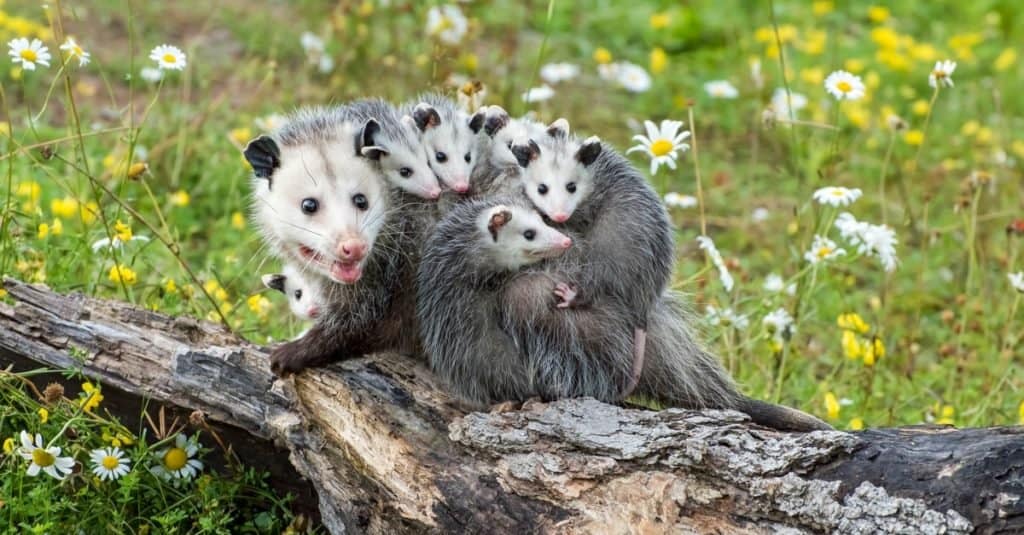
The Virginia Opossum is the only marsupial found north of Mexico, with a range that extends into the United States and Canada.
©Evelyn D. Harrison/Shutterstock.com
Of the 387 living species, 135 live in the Americas, with the other 252 spread across Australasia. Most of the American marsupials live in South and Central America. Mexico has just eight opossum species, while there is only a single living marsupial species that ranges north of Mexico, the Virginia Opossum (Didelphis virginiana).
Do All Marsupials Have Pouches?
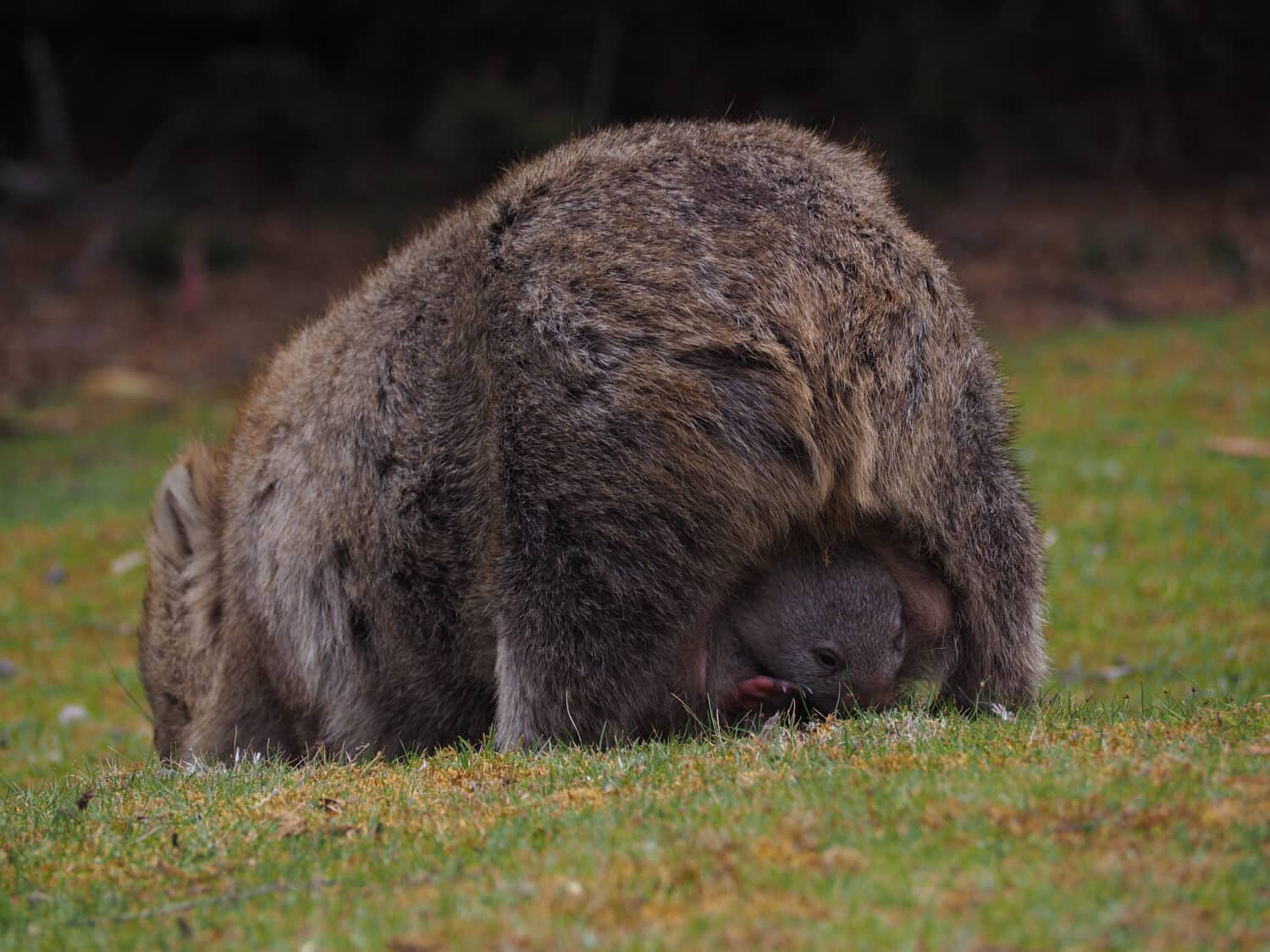
A baby wombat pokes out of its mom’s back-facing pouch.
©tinokoloski/Shutterstock.com
The common name “marsupial” derives from the Greek word for “pouch,” and it is certainly true that many marsupials have pouches for their young. However, not all marsupial pouches are like the stereotypical kangaroo “pockets” or opossum belly “bags” most people think of. For example, in some burrowing species like wombats, the pouch is a back-facing opening. Other marsupials like numbats don’t have fully formed pouches, but just have folds of skin that cover the teats. And other marsupials such as mouse opossums are completely pouchless! Furthermore, in both water opossums and thylacines, males have pouches too — however, these aren’t for the babies, but rather for protecting their genitalia.
How Are Marsupials Classified?
All marsupials are classified in the infraclass Marsupialia, which is divided into one extinct and seven extant orders:
Didelphimorphia

The big eared opossum (
Didelphis aurita) is just one of over 100 living species of opossums found across the Americas.
©LeoMercon/iStock via Getty Images
This order contains a single family, Didelphidae, which includes all the marsupials known as opossums. There are 126 living species, all native to the Americas.
Paucituberculata
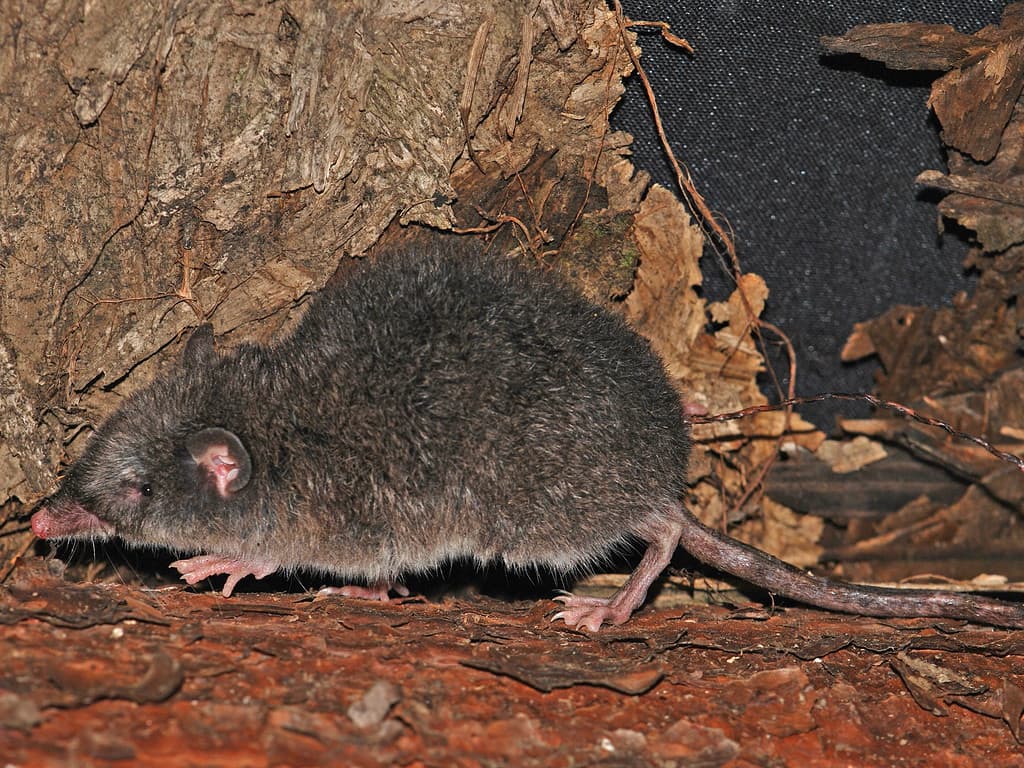
Although commonly called shrew opossums, these fellow American marsupials are classified in separate families from the “true” opossums.
©jorgebrito / CC0, via Wikimedia Commons – License
This order contains a single family, Caenolestidae, which includes the 7 living species of shrew opossums. They are all endemic to the Andes region of South America.
Microbiotheria

©Rob Jansen/Shutterstock.com
This order includes one extinct family, Woodburnodontidae, known only from fossils in Antarctica, and one extant family, Microbiotheriidae. The latter family, in turn, is represented only by the monito del monte, which until recently was considered a single species, Dromiciops gliroides. However, a 2016 study split it into two species: the southern monito del monte (Dromiciops gliroides) and Pancho’s monito del monte (Dromiciops bozinovici). They are endemic to Argentina and Chile in South America. Although this order is firmly rooted in the Americas, DNA evidence suggests it is more closely related to the Australasian marsupials. This, in turn, suggests the monito del montes are the closest living relatives of the ancestral marsupial(s) responsible for original dispersal into Australia.
Yalkaparidontia
This order and its single family Yalkaparidontidae were first created in 1988 to classify two new fossil species discovered in the Oligo-Micene deposits of Riversleigh in Queensland, Australia: Yalkaparidon coheni and Yalkaparidon jonesi. It is the only known fully extinct marsupial order.
Dasyuromorphia

Numbats are one of the most unique of the living marsupials — and most endangered, with less than 1000 left in the wild.
This large order includes 77 living species, primarily carnivorous marsupials such as quolls and Tasmanian devils (along with the presumed extinct thylacines). Also in this order is the numbat (Myrmecobius fasciatus), a highly endangered species that is noteworthy for not only being pouchless, but also one of only two strictly diurnal marsupial species, and the only myrmecophagous (ant and termite-eating) one.
Dasyuridae: antechinuses, quolls, dunnarts, Tasmanian devils, and relatives
Myrmecobiidae: numbats
*Thylacinidae: thylacines
Notoryctemorphia
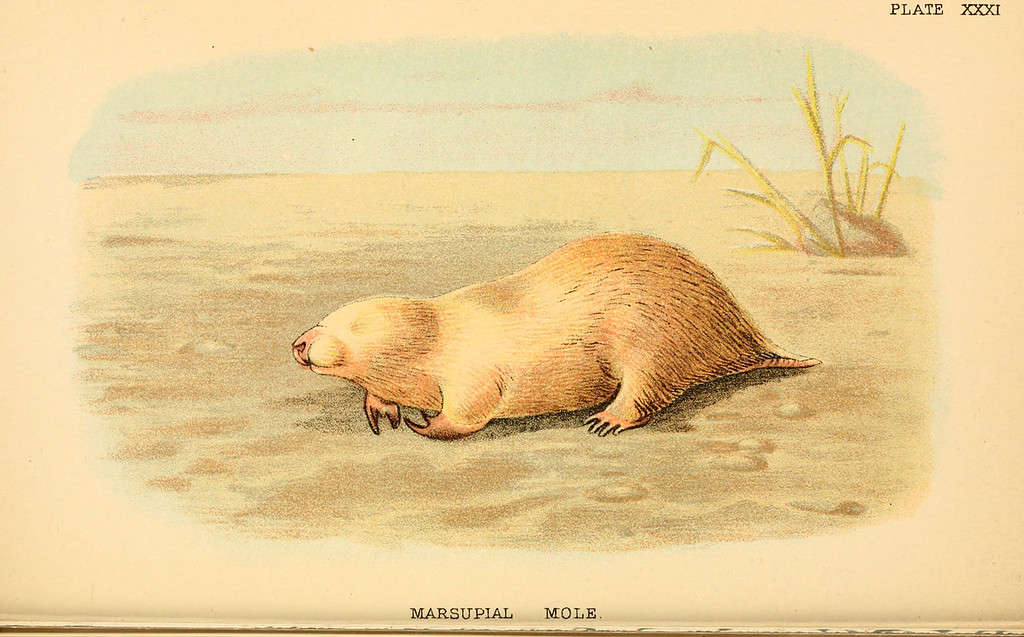
Marsupial moles are an example of parallel evolution, corresponding to the placental moles.
©Lydekker, Richard / Public domain, via Wikimedia Commons – License
This order contains a single family, Notoryctidae, which includes only two living species of marsupial moles and their fossil relatives. They are endemic to arid regions of central Australia.
Peramelemorphia
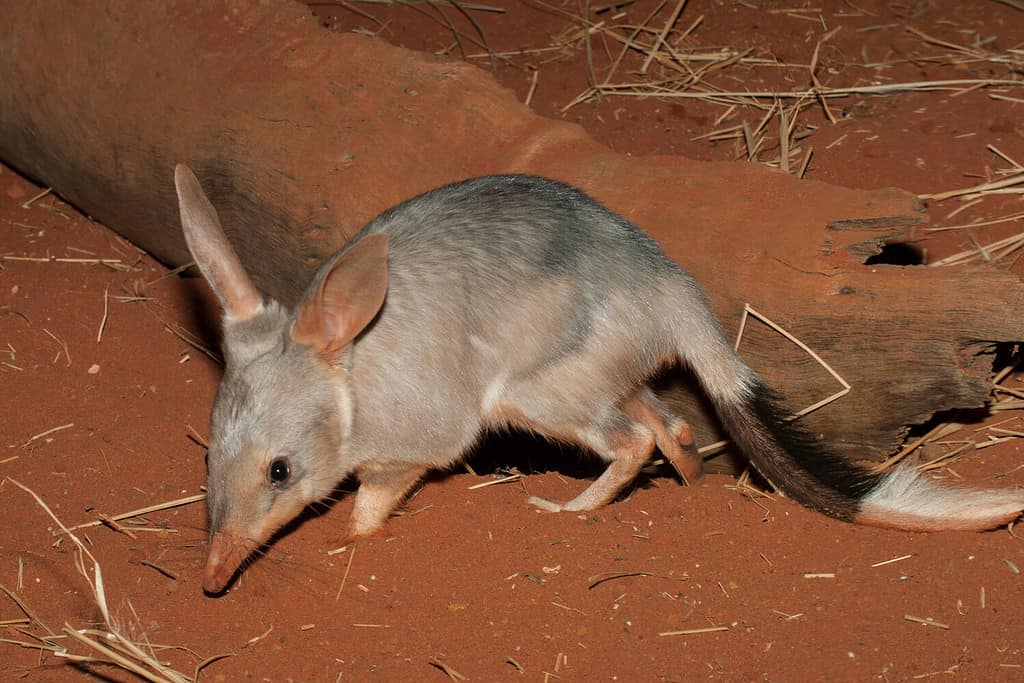
Bilbies have long ears and snouts, so they are often called “rabbit-eared
bandicoots
.
©Ken Griffiths/Shutterstock.com
This order includes two extinct families and two extant families. Yaralidae are only known from fossil remains of two described species in Australia, while Chaeropodidae, the pig-footed bandicoots of Australia, have only been presumed extinct since the 1950s. Likewise, the Thylacomyidae family of Australian bilbies has just one surviving member, the Greater Bilby (Macrotis lagotis), while its cogener the Lesser Bilby (Macrotis leucura) has also been presumed extinct since the 1950s. The Peramelidae of bandicoots has fared a bit better, with 21 living species found in both Australia and New Guinea.
Diprotodontia

in some marsupial species such as koalas, when the babies outgrow the pouch, they get a ride on their mom’s back instead!
©Alizada Studios/Shutterstock.com
This is the largest and most diverse marsupial order, an impressive radiation of 151 living species that range across Australasia. The order includes iconic marsupials such as wombats, koalas, and kangaroos, along with various possums (not to be confused with the opossums of the Americas). They are classified into the following three suborders and 16 families (11 extant and 5 extinct):
Suborder Vombatiformes:
Phascolarctidae: koalas
Vombatidae: wombats
*Diprotodontidae: giant wombats
*Palorchestidae: marsupial tapirs
*Thylacoleonidae: marsupial lions
Suborder Phalangeriformes:
Acrobatidae: feathertail gliders, feather-tailed possums
Burramyidae: pygmy possums
Petauridae: trioks, striped possums, Leadbeater’s possums, gliders
Phalangeridae: brushtail possums, cuscuses
Pseudocheiridae: ring-tailed possums & allies
Tarsipedidae: honey possums
*Ektopodontidae: sprite possums
Suborder Macropodiformes:
Hypsiprymnodontidae: musky rat-kangaroos
Macropodidae: kangaroos, wallabies & allies
Potoroidae: bettongs, potoroos, rat-kangaroos
*Balbaridae: basal quadrupedal kangaroos
Summary of Marsupial Classification
| Scientific Order | Families | # Living Species | Modern Range |
|---|---|---|---|
| Didelphimorphia | Didelphidae: Opossums | 126 | Americas |
| Paucituberculata | Caenolestidae: Shew Opossums | 7 | Andes region of South America |
| Microbiotheria | Microbiotheriidae: Monito del Montes *Woodburnodontidae | 2 | SW South America |
| *Yalkaparidontia | *Yalkaparidontidae | 0 | – |
| Dasyuromorphia | Dasyuridae: antechinuses, quolls, dunnarts, Tasmanian devils, & other relatives Myrmecobiidae: numbat *Thylacinidae: thylacine | 77 | Australasia |
| Notoryctemorphia | Notoryctidae: marsupial moles | 2 | central Australia |
| Peramelemorphia | Thylacomyidae: bilbies Peramelidae: bandicoots *Chaeropodidae: pig-footed bandicoots *Yaralidae | 22 | Australasia |
| Diprotodontia | see suborders below | 151 | Australasia |
| Diprotodontia: Suborder Vombatiformes | Vombatidae: wombats Phascolarctidae: koalas *Diprotodontidae: giant wombats *Palorchestidae: marsupial tapirs *Thylacoleonidae: marsupial lions | 4 (of 151) | Australia (including Tasmania) |
| Diprotodontia: Suborder Phalangeriformes | Acrobatidae: feathertail gliders, feather-tailed possums Burramyidae: pygmy possums Petauridae: trioks, striped possums, Leadbeater’s possums, gliders Phalangeridae: brushtail possums, cuscuses Pseudocheiridae: ring-tailed possums & allies Tarsipedidae: honey possums *Ektopodontidae: sprite possums | 75 (of 151) | Australasia |
| Diprotodontia: Suborder Macropodiformes | Hypsiprymnodontidae: musky rat-kangaroos Macropodidae: kangaroos, wallabies & allies Potoroidae: bettongs, potoroos, rat-kangaroos *Balbaridae: basal quadrupedal kangaroos | 72 (of 151) | Australasia |
Sources: ASM Mammal Diversity Database, Handbook of the Mammals of the World, Walker’s Mammals of the World
Conclusion
Marsupials are one of the three living lineages of mammals along with the monotremes and placentals. They are most readily differentiated by their different modes of reproduction and development. The marsupial lineage likely first arose in Asia and North America and then subsequently gained a foothold in South America. However, today only 135 of the 387 living species are still found in the Americas, while the other 252 are the result of a dispersal into what would become Australia. While many female marsupials have some sort of pouch in which the young are carried and fed, some species only have folds of skin, while others are entirely pouchless. Marsupials are considered model taxa for learning more about both adaptive radiation and parallel evolution.
The photo featured at the top of this post is © Benny Marty/Shutterstock.com
Thank you for reading! Have some feedback for us? Contact the AZ Animals editorial team.







